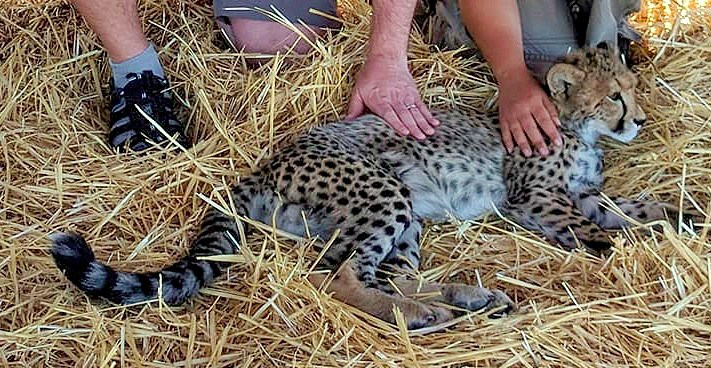
Most of our followers know about our arrival in South Africa just a few days ago to visit our latest rescues, Moomba-Thandi, Bella-Ntombi, Zamba-Navid, Adam and Eve- Floria.
We are very happy to see all of them are doing so well and are happy and healthy with us at Ubuntu Wildlife Sanctuary.
This time of year a lot of people we know, or friend of them are also spending their vacation in one of the most beautiful countries in the world, South Africa. When visiting South Africa it is very common to visit places to watch animals Africa is known for. That is why the Moomba Foundation started with a list of ethical animal parks tourists can go to without concerns. Only that way we can create travel routes that people can follow so they can enjoy a vacation and still positively contribute to all South African animals.
We started visiting animal parks/project mostly with lions. We also have visited some primate projects. We started with these, because a lot of people did not know about the abuse behind these animal projects. But because now more people are aware of this, a new abuse of animals starts that people do not know about; the Cheetah industry.
I found a great article explaining about this new epidemic that is popping up everywhere in South Africa. I just copied the most important part of it I think people should read before going to such a place. Source Green Girls in Africa.
Cheetahs in Captivity
In 2010, the number of cheetahs in captivity by comparison was already more than 600 kept in 79 different facilities.
Captive breeding generally happens under the banner of conservation – to reintroduce captive bred cheetah back into the wild and for the preservation of genetic material.
However, the true value of captive breeding is still very much in dispute. Here are some of the reasons why many conservationists quite rightly don’t believe in the conservation benefits of captive breeding of cheetahs:
Reintroduction issues:
- The reintroduction of cheetah into the wild is a long and expensive process with very low success rates, as was again shown in this study in Limpopo.
- It is suggested that after a number years in captivity, a species may not even preserve its unique biological and behavioural characteristics and therefore making the conservation efforts of captive breeding far less worthy.
Captive breeding issues:
- Cheetahs in captivity are extremely sensitive to stress and often display abnormal behaviour, such as pacing back and forth out of frustration, because their hunting and ranging instincts are denied.
- Furthermore, there is a high prevalence of disease in captive populations that is now thought to be caused by chronic stress suffered by cheetah in captive conditions, as well as an unnatural diet. The lack of high-energy fat in their diet may even cause depression.
- The wild cheetah population suffers from low genetic diversity due to the fact that they only just survived the megafauna extinction during the Pleistocene. As a result, the wild population have low sperm counts, increased susceptibility to disease, skeletal abnormalities and cubs frequently die before reaching adulthood. This low genetic diversity of the wild population easily leads to inbreeding in captivity.
- It is also believed that captive breeding poses a potential threat to the survival of the wild population through capture of wild individuals for captive breeding, often to prevent inbreeding (see also point above).
Potential for canned hunting:
- There is the potential for canned hunting of captive bred cheetahs and the large and growing captive population could easily provide a supply for this despicable practice. It’s likely only a matter of time and is therefore a huge issue of concern.
- Please note: Currently, the Threatened or Protected Species Regulations (TOPS) do not allow canned hunting of large predators with the exception of lions.
These points are by no means exhaustive, but clearly pose some serious questions around the necessity for and ethics of such a large captive bred cheetah population in South Africa.
Why do we have so Many Captive Bred Cheetahs in South Africa?
When we examine the legal trading of cheetah between breeding farms and tourism facilities in South Africa, we start to understand this growing and worrying trend of prolific captive breeding.
South Africa has a significant number of so-called ambassador cheetahs. The vast majority is bred in captivity and hand-reared specifically to be groomed as well-behaved ambassadors and not rescued from the wild and unable to be returned back, as is often believed.
An even more worrying trend is emerging of cheetah cub petting, where cubs are bred on demand specifically to fulfill the cuteness factor in wildlife facilities, such as Cheetah Outreach. The cuteness factor draws in the paying public, who have their picture taken while petting the cheetah cub.
Once the cubs outgrow the petting facility, they are often returned to the breeding facility to be used for further breeding, sold to zoos overseas, or traded to the Middle East, where many are kept as pets – purely a status symbol.
The excessive captive breeding is not the answer to the plight of cheetahs in the wild and this kind of animal exploitation has to stop. It has no part to play in our current tourism industry and South African Tourism has taken a firm stance on the issue of animal interaction.

Recent Comments